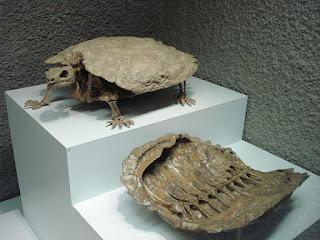Alas, the first Naturalist's Week has come to an end. I hope you had an enjoyable time learning about some of the people who helped to discover, innovate, and conserve the animals that we normally learn about on this site. I tried to pick some individuals who may be a bit lesser known and it was fun to go back to my roots (part of my background is in European History, so writing about people, places, and their impact is right up my alley). Anyway, I might do this again, since there are so many awesome people out there who significantly impacted the animal world for the better!
But for now, let's learn about Florence Merriam Bailey, a woman who had an intense interest in the feathered creatures of the world, and who dedicated more than 50 years of her life to their study and observation.
Born in New York in 1863, Florence Merriam came from a family that strongly encouraged her interest in natural history. Her father was a friend of John Muir, and her older brother would eventually become the first chief of the U.S. Biological Survey. In fact, I could probably write an entire article about her brother, Clinton Hart Merriam, but we'll save his adventures for another day!
Anyway, from 1882-1886 she studied at Smith College, and though she did not received a degree (well... she would get an honorary one in 1921) she did begin to be more consumed by her passion for birds. At that time, birds were studied from their skins and bones, and rarely from life. Interestingly, Florence Merriam was one of the very first people to call for the use of Binoculars when birding, rather than a gun!
In 1885, while still at Smith, she started to write about protecting birds, especially in regards to the fashion industry. Feathers were incredibly popular on
womens hats at the time, and as a result some species were being hunted to near extinction (the Whooping Crane!) Merriam formed her school's Audubon Club, wrote in defense of the birds, and actually organized protests and distributed pamphlets to make the cause known.
It was around this time that she also became the first female associate member of the American Ornithologist's Union, and four years later she published her first book, Birds Through an Opera Glass, which was based on articles that she had written for Audubon Magazine. During the late 1880s and through the 1890s, Florence Merriam traveled throughout the American West, which influenced several more books.
At the tail-end of the century she returned to Washington D.C. to stay with her brother, and it is there that she met and married one of his naturalist colleagues, Vernon Bailey. The couple continued to travel throughout the West, writing about their animal collections and observations- she with birds, and he with mammals.
Florence Merriam Bailey continued to
write and explore until her death in 1948 at the age of 85. She published a dozen books, more than 100 articles, and helped to bring awareness to birds of the United States. Her last major work,
Among the Birds in the Grand Canyon National Park, was published in 1939, and in her later years she helped to found the Audubon Society of the District of Columbia, where she taught classes on Ornithology for several years. She became the first woman fellow of the American Ornithologist's Union in 1929, and even had a subspecies of Mountain Chicadee,
Parus gambeli baileyae, named after her in 1908.
If you are interested in her works,
several of them are available through public domain resources like
Archive.org.

 RSS Feed
RSS Feed Twitter
Twitter 10:00
10:00
 booker2o73lister58
booker2o73lister58











































